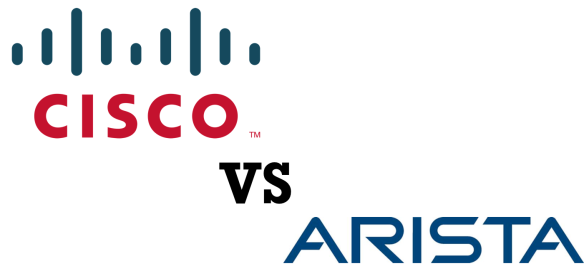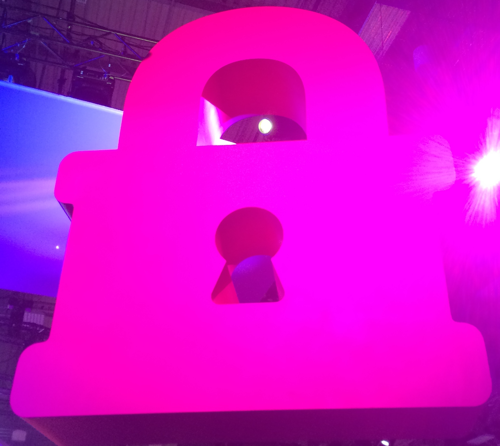Author Archives: networkingnerd
Author Archives: networkingnerd

Container networking is a tough challenge to solve. The evolving needs of creating virtual networks to allow inter-container communications is difficult. But ensuring security at the same time is enough to make you pull your hair out. Lots of companies are taking a crack at it as has been demonstrated recently by microsegmentation offerings from Cisco, VMware NSX, and many others. But a new development on this front set sail today. And the captain is an old friend.
Dimitri Stiladis did some great things in his time at Nuage Networks. He created a great overlay network solution that not only worked well for software defined systems but also extended into the container world as more and more people started investigating containers as the new way to provide application services. He saw many people rushing into this area with their existing solutions as well as building new solutions. However, those solutions were all based on existing technology and methods that didn’t work well in the container world. If you ever heard someone say, “Oh, containers are just lightweight VMs…” you know what kind of thinking I’m talking about.
Late last year, Dimitri got together with some of Continue reading

I had a great time at ONUG this past week. I got to hear a lot of great presentations from some great people, and I got a chance to catch up with some friends as well. One of those was Pete Lumbis (@PeteCCDE) who had a great presentation this past spring at Interop. We talked a lot about tech and networking, but one topic he brought up that made me stop and think for a moment was the wide gulf between design and architecture.
Design is a critical part of an IT project. Things must fit and make sense before the implementors can figure out how to put the pieces together. Design is all about building a list of products and describing how they’ll interact once turned on. Proper design requires you to step away from the keyboard for a moment and think about a bigger picture than just hacking CLI commands or Python code to make some lights start blinking in the right order.
But design is inherently limited. Think about the last design you did, whether it be wireless or networking or even storage. When you start a design, you automatically make assumptions about Continue reading

Facebook is back in the news again. This time, it’s because of the release of their new Wedge 100 switch into the Open Compute Project (OCP). Wedge was already making headlines when Facebook announced it two years ago. A fast, open sourced 40Gig Top-of-Rack (ToR) switch was huge. Now, Facebook is letting everyone in on the fun of a faster Wedge that has been deployed into production at Facebook data centers as well as being offered for sale through Edgecore Networks, which is itself a division of Accton. Accton has been leading the way in the whitebox switching market and Wedge 100 may be one of the ways it climbs to the top.
Wedge 100 is pretty impressive from the spec sheet. They paid special attention to making sure the modules were expandable, especially for faster CPUs and special purpose devices down the road. That’s possible because Wedge is a highly specialized micro server already. Rather than rearchitecting the guts of the whole thing, Facebook kept the CPU and the monitoring stack and just put newer, faster modules on it to ramp to 32x100Gig connectivity.

As suspected in the above image, Facebook is using Broadcom Tomahawk as Continue reading

Broadcom announced a new addition to their growing family of merchant silicon today. The new Broadcom Tomahawk II is a monster. It doubles the speed of it’s first-generation predecessor. It has 6.4 Tbps of aggregate throughout, divided up into 256 25Gbps ports that can be combined into 128 50Gbps or even 64 100Gbps ports. That’s fast no matter how you slice it.
Broadcom is aiming to push these switches into niches like High-Performance Computing (HPC) and massive data centers doing big data/analytics or video processing to start. The use cases for 25/50Gbps haven’t really changed. What Broadcom is delivering now is port density. I fully expect to see top-of-rack (ToR) switches running 25Gbps down to the servers with new add-in cards connected to 50Gbps uplinks that deliver them to the massive new Tomahawk II switches running in the spine or end-of-row (EoR) configuration for east-west traffic disbursement.
Another curious fact of the Tomahawk II is the complete lack of 40Gbps support. Granted, the support was only paid lip service in the Tomahawk I. The real focus was on shifting to 25/50Gbps instead of the weird 10/40/100Gbps split we had in Trident II. I talked about this a couple of Continue reading

It’s been a busy week for me. In fact, it’s been a busy few weeks. I’ve had lots of time to enjoy NetApp Insight, Cloud Field Day, and Storage Field Day. I’ve also been doing my best to post interesting thoughts and ideas. Whether it’s taking on the CCIE program or keynote speakers, I feel like I owe a debt to the community and my readers to talk about topics that are important to them, or at least should be. Which is why I’m irritated right now about those ideas being stolen.
A large part of my current job is finding people that are writing great things and shining a spotlight on them. I like reading interesting ideas. And I like sharing those ideas with people. But when I share those ideas with people, I make absolutely sure that everyone knows where those ideas came from originally. And if I use those ideas for writing my own content, I make special care to point out where they came from and try to provide the context for the original statement in the first place.
What annoys me to no end is when people take ideas as Continue reading

My distaste for keynotes is well known. With the possible exception of Justin Warren (@JPWarren) there may not be a person that dislikes them more than I do. I’ve outlined my reasons for it before, so I won’t go into much depth about it here. But I do want to highlight a few recent developments that are doing a great job of helping me find new things to dislike.
When you walk into a keynote ballroom or arena and see two comfy chairs on stage, you know what’s coming. As someone told me recently, “This is when I know the next hour is going to suck.” The mock interview style of keynote speech is not good. It’s a thinly-veiled attempt to push an agenda. Perhaps it’s about innovation. Or transformation. Or some theme of the conference. Realistically, it’s mostly a chance for a keynote host (some form of VP) to provide forced banter with a celebrity that’s being paid to be there.
These “interviews” are rarely memorable. They seem self serving and very plastic. The only ones that even stand out to me in recent memory are the ones that went off the Continue reading

One of the benefits of upgrading to MacOS 10.12 Sierra is the ability to unlock my Mac laptop with my Apple Watch. Yet I’m not able to do that. Why? Turns out, the answer involves some pretty cool tech.
The tech specs list the 2013 MacBook and higher as the minimum model needed to enable Watch Unlock on your Mac. You also need a few other things, like Bluetooth enabled and a Watch running WatchOS 3. I checked my personal MacBook against the original specs and found everything in order. I installed Sierra and updated all my other devices and even enabled iCloud Two-Factor Authentication to be sure. Yet, when I checked the Security and Privacy section, I didn’t see the checkbox for the Watch Unlock to be enabled. What gives?
It turns out that Apple quietly modified the minimum specs during the Sierra beta period. Instead of early 2013 MacBooks being support, the shift moved support to mid-2013 MacBooks instead. I checked the spec sheets and mine is almost identical. The RAM, drive, and other features are the same. Why does Watch Unlock work on those Macs and not mine? The answer, it appears, is Continue reading

We had a rousing discussion about DevOps at Cloud Field Day this week. The delegates talked about how DevOps was totally a thing and it was the way to go. Being the infrastructure guy, I had to take a bit of umbrage at their conclusions and go on a bit of a crusade myself to defend infrastructure from the predations of developers.
DevOps folks want to talk about continuous improvement and continuous development (CI/CD) all the time. They want the freedom to make changes as needed to increase bandwidth, provision ports, and rearrange things to fit development timelines and such. It’s great that they have they thoughts and feelings about how responsive the network should be to their whims, but the truth of infrastructure today is that it’s on the verge of collapse every day of the week.
Networking is often a “best effort” type of configuration. We monkey around with something until it works, then roll it into production and hope it holds. As we keep building more patches on to of patches or try to implement new features that require something to be disabled or bypassed, that creates a house of cards that is only as Continue reading

Applications are king. Forget all the things you do to ensure proper routing in your data center. Forget the tweaks for OSPF sub-second failover or BGP optimal path selection. None of it matters to your users. If their login to Seibel or Salesforce or Netflix is slow today, you’ve failed. They are very vocal when it comes to telling you how much the network sucks today. How do we fix this?
The first problem is the cloud focus of applications. Once our packets leave our border routers it’s a giant game of chance as to how things are going to work next. The routing protocol games that govern the Internet are tried and true and straight out of RFC 1771(Yes, RFC 4271 supersedes it). BGP is a great tool with general purpose abilities. It’s becoming the choice for web scale applications like LinkedIn and Facebook. But it’s problematic for Internet routing. It scales well but doesn’t have the ability to make rapid decisions.
The stability of BGP is also the reason why it doesn’t react well to changes. In the old days, links could go up and down quickly. BGP was designed to avoid issues with Continue reading

I had a great conversation with Ed Horley (@EHorley) and Patrick Hubbard (@FerventGeek) last night around new technologies. We were waxing intellectual about all things related to advances in analytics and intelligence. There’s been more than a few questions here at VMworld 2016 about the roles that machine learning and artificial intelligence will play in the future of IT. But during the conversation with Ed and Patrick, I finally hit on the perfect analogy for machine learning and artificial intelligence (AI). It’s pretty easy to follow along, so don’t panic.
Machine learning is an amazing technology. It can extrapolate patterns in large data sets and provide insight from seemingly random things. It can also teach machines to think about problems and find solutions. Rather than go back to the tired Target big data example, I much prefer this example of a computer learning to play Super Mario World:
You can see how the algorithms learn how to play the game and find newer, better paths throughout the level. One of the things that’s always struck me about the computer’s decision skills is how early it learned that spin jumps provide more benefit than regular Continue reading

Yesterday was D-Day for Arista in their fight with Cisco over the SysDB patent. I’ve covered this a bit for Network Computing in the past, but I wanted to cover some new things here and put a bit more opinion into my thoughts.
As the great Stephen Foskett (@SFoskett) says, you always have to punch above your weight. When you are a large company, any attempt to pick on the “little guy” looks bad. When you’re at the top of the market it’s even tougher. If you attempt to fight back against anyone you’re going to legitimize them in the eye of everyone else wanting to take a shot at you.
Cisco has effectively designated Arista as their number one competitor by way of this lawsuit. Arista represents a larger threat that HPE, Brocade, or Juniper. Yes, I agree that it is easy to argue that the infringement constituted a material problem to their business. But at the same time, Cisco very publicly just said that Arista is causing a problem for Cisco. Enough of a problem that Cisco is going to take them to court. Not make Arista license the patent. That’s telling.

Thanks to Tech Field Day, I fly a lot. As Southwest is my airline of choice and I have status, I tend to find myself sitting the slightly more comfortable exit row seating. One of the things that any air passenger sitting in the exit row knows by heart is the exit row briefing. You must listen to the flight attendant brief you on the exit door operation and the evacuation plan. You are also required to answer with a verbal acknowledgment.
I know that verbal acknowledgment is a federal law. I’ve also seen some people blatantly disregard the need to verbal accept responsibility for their seating choice, leading to some hilarious stories. But it also made me think about why making people talk to you is the best way to make them understand what you’re saying
Today’s society full of distractions from auto-play videos on Facebook to Pokemon Go parks at midnight is designed to capture the attention span of a human for a few fleeting seconds. Even playing a mini-trailer before a movie trailer is designed to capture someone’s attention for a moment. That’s fine in a world where distraction is assumed and people try Continue reading

Networking Field Day 12 starts today. There are a lot of great presenters lined up. As I talk to more and more networking companies, it’s becoming obvious that simply moving packets is not the way to go now. Instead, the real sizzle is in telling you all about those packets instead. Not packet inspection but analytics.
Ask any networking professional and they’ll tell you that the systems they manage have a wealth of information. SNMP can give you monitoring data for a set of points defined in database files. Other protocols like NetFlow or sFlow can give you more granular data about a particular packet group of data flow in your network. Even more advanced projects like Intel’s Snap are building on the idea of using telemetry to collect disparate data sources and build collection methodologies to do something with them.
The concern that becomes quickly apparent is the overwhelming amount of data being received from all these sources. It reminds me a bit of this scene:
How can you drink from this firehose? Maybe you should be asking if you should instead?
Data is useless. We need to perform analysis Continue reading

It all comes back to people. People are the users of the system. They are the source of great imagination and great innovation. They are also the reason why security professionals pull their hair out day in and day out. Because computer systems don’t have the capability to bypass, invalidated, and otherwise screw up security quite like a living, breathing human being.
Security is designed to make us feel safe. Door locks keep out casual prowlers. Alarm systems alert us when our home or business is violated. That warm fuzzy feeling we get when we know the locks are engaged and we are truly secure is one of bliss.
But when security gets in our way, it’s annoying. Think of all the things in your life that would be easier if people just stopped trying to make you secure. Airport security is the first that comes to mind. Or the annoying habit of needing to show your ID when you make a credit card purchase. How about systems that scan your email for data loss prevention (DLP) purposes and kick back emails with sensitive data that you absolutely need to share?
Security only benefits us when it’s Continue reading

Hey! I made the sign pic this year!
I’ve had a week to get over my Cisco Live hangover this year. I’ve been going to Cisco Live for ten years and been involved in the social community for five of them. And I couldn’t be prouder of what I’ve seen. As the picture above shows, the community is growing by leaps and bounds.

I was asked many, many times about Tom’s Corner. What was it? Why was it important? Did you really start it? The real answer is that I’m a bit curious. I want to meet people. I want to talk to them and learn their stories. I want to understand what drives people to learn about networking or wireless or fax machines. Talking to a person is one of the best parts of my job, whether it be my Bruce Wayne day job or my Batman night job.
Social media helps us all stay in touch when we aren’t face-to-face, but meeting people in real life is as important too. You know who likes to hug. You find out who tells good stories. Little things matter like finding out how tall someone is in Continue reading

I stirred up quite the hornet’s nest last week, didn’t I? I posted about how I thought the CCIE Routing and Switching Written Exam needed to be fixed. I got 75 favorites on Twitter and 40 retweets of my post, not to mention the countless people that shared it on a variety of forums and other sites. Since I was at Cisco Live, I had a lot of people coming up to me saying that they agreed with my views. I also had quite a few people that weren’t thrilled with my perspective. Thankfully, I had the chance to sit down with Yusuf Bhaiji, head of the CCIE program, and chat about things. I wanted to share some thoughts here.
One of the biggest complaints that I’ve heard is that I was being “malicious” in my post with regards to the CCIE. I was also told that it was a case of “sour grapes” and even that the exam was as hard as it was on purpose because the CCIE is supposed to be hard. Mostly, I felt upset that people were under the impression that my post was designed to destroy, harm, or otherwise defame the Continue reading

I’m having a great time at Cisco Live this year talking to networking professionals about the state of things. Most are optimistic about where their jobs are going to fit in with networking and software and the new way of doing things. But there is an undercurrent of dissatisfaction with one of the most fundamental pieces of network training in the world. The discontent is palpable. From what I’ve heard around Las Vegas this week, it’s time to fix the CCIE Written Exam.
The CCIE written is the bellwether of network training. It’s a chance for network engineers that use Cisco gear to prove they have what it takes to complete a difficult regimen of training to connect networks of impressive size. It’s also a rite of passage to show others that you know how to study, prep, and complete a difficult practical examination without losing your cool. But all that hard work starts with a written test.
The CCIE written has always been a tough test. It’s the only barrier to entry to the CCIE lab. Because the CCIE has never had prerequisites and likely never will due to long standing tradition, the only thing standing Continue reading

Complexity is the enemy of understanding. Think about how much time you spend in your day trying to simplify things. Complexity is the reason why things like Reddit’s Explain Like I’m Five exist. We strive in our daily lives to find ways to simplify the way things are done. Well, except in networking.
Networking hasn’t always been a super complex thing. Back when bridges tied together two sections of Ethernet, networking was fairly simple. We’ve spent years trying to make the network do bigger and better things faster with less input. Routing protocols have become more complicated. Network topologies grow and become harder to understand. Protocols do magical things with very little documentation beyond “Pure Freaking Magic”.
Part of this comes from applications. I’ve made my feelings on application development clear. Ivan Pepelnjak had some great comments on this post as well from Steve Chalmers and Derick Winkworth (@CloudToad). I especially like this one:
Derick is right. The application Continue reading

The behemoth merger of Dell and EMC is nearing conclusion. The first week of August is the target date for the final wrap up of all the financial and legal parts of the acquisition. After that is done, the long task of analyzing product lines and finding a way to reduce complexity and product sprawl begins. We’ve already seen the spin out of Quest and Sonicwall into a separate entity to raise cash for the final stretch of the acquisition. No doubt other storage and compute products are going to face a go/no go decision in the future. But one product line which is in real danger of disappearing is networking.
The first indicator of the problems with Dell and networking comes from whitebox switching. Dell released OS 10 earlier this year as a way to capitalize on the growing market of free operating systems running on commodity hardware. Right now, OS 10 can run on Dell equipment. In the future, they are hoping to spread it out to whitebox devices. That assumes that soon you’ll see Dell branded OSes running on switches purchased from non-Dell sources booting with ONIE.
Once OS 10 pushes forward, what does that Continue reading

I got to spend a couple of days this week at DockerCon and learn a bit more about software containers. I’d always assumed that containers were a slightly different form of virtualization, but thankfully I’ve learned my lesson there. What I did find out about containers gives me a bit of hope about the future of applications and security.
One of the things that made me excited about Docker is that the process isolation idea behind building a container to do one thing has fascinating ramifications for application developers. In the past, we’ve spent out time building servers to do things. We build hardware, boot it with an operating system, and then we install the applications or the components thereof. When we started to virtualize hardware into VMs, the natural progression was to take the hardware resource and turn it into a VM. Thanks to tools that would migrate a physical resource to a virtual one in a single step, most of the first generation VMs were just physical copies of servers. Right down to phantom drivers in the Windows Device Manager.
As we started building infrastructure around the idea of virtualization, we stopped migrating physical boxes Continue reading